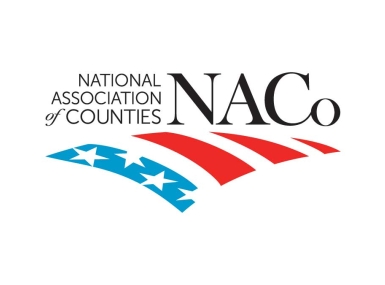NACo's new report shows how counties are investing ARPA dollars

Key Takeaways
On the second anniversary of the signing of the American Rescue Plan Act on March 11, NACo published a new report on how counties are investing ARPA dollars in their communities.
In the initial months of the pandemic, counties faced a growing crisis when the demand for services increased rapidly as county revenue streams were strained.
In mid-2020, over 70 percent of counties were estimated to have cut or delayed capital investments, and over two-thirds of counties cut or delayed various services.
Learn more
Faced with these profound challenges, county leaders acted swiftly to provide frontline workers with hazard pay and to support businesses’ recovery through investments, including providing personal protective equipment (PPE), offering direct assistance to small businesses and supporting pandemic-impacted workers.
Counties stood up novel testing and tracing programs at a larger scale than ever, and when the vaccine was approved for public use, we played an instrumental role in the effort to mass vaccinate Americans
The State and Local Fiscal Recovery Fund (Recovery Fund), established through the American Rescue Plan Act (ARPA), provided $65.1 billion in direct relief to counties so that they could continue to meet the increased demand from residents and weather the COVID-19 pandemic.
In the two years since the historic passage of ARPA, counties continue to make transformational investments, spur recovery efforts and bolster the economy through our Recovery Fund allocations.

Counties are allocating SLFRF funds to fund crucial local services
As counties transition from investing in short-term pandemic response to long-term investments, local leaders are making strategic investments to strengthen America’s workforce, improve housing conditions, support local businesses and foster strong and equitable economic recovery.
Howard County, Md., is offering support services to entrepreneurs and small businesses in the county.
Benton County, Ark., is helping lower-income wage earners move to higher-wage, high-demand jobs, specifically in the healthcare industry, through additional education and certification.
The Recovery Fund helped counties to stabilize budgets and restore public-sector capacity, but the county workforce continues to struggle to recover from pandemic-related job losses amid growing demand and need for local government services.
One month after peak unemployment, local government jobs decreased by more than 1.2 million.
To this day, full recovery within local government jobs continues to lag. Despite a slower recovery in the county workforce and increased demand for service delivery, counties continue to invest recovery funds rapidly, working to foster equitable economic recovery.
Attachments
Related News

County Countdown – Dec. 15, 2025
Every other week, NACo's County Countdown reviews top federal policy advocacy items with an eye towards counties and the intergovernmental partnership.

County Countdown – Dec. 1, 2025
Every other week, NACo's County Countdown reviews top federal policy advocacy items with an eye towards counties and the intergovernmental partnership.

Counties Celebrate Key Permitting Inclusions in SPEED Act
NACo issued the following statement in response to the passage of the Standardizing Permitting and Expediting Economic Development (SPEED) Act (H.R. 4776), which advanced out of the U.S. House Committee on Natural Resources on November 20.
